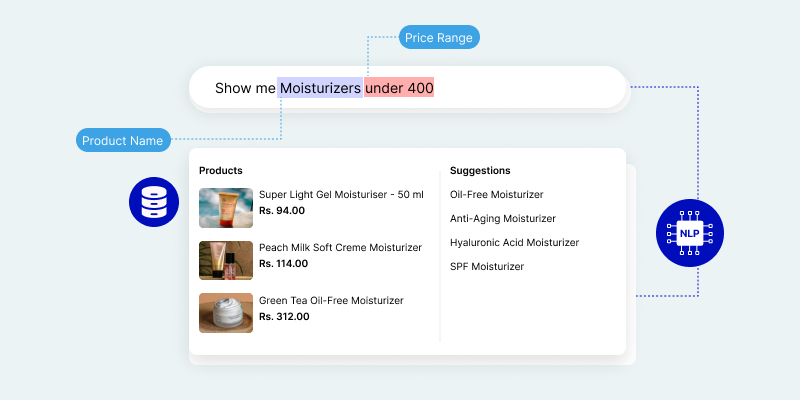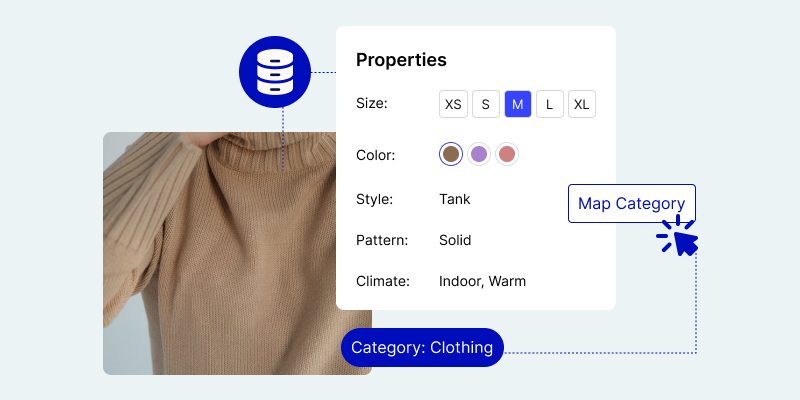In this article, we are going to see the role of vector database in an eCommerce chatbot.
Vector database plays a crucial role in enhancing the bot’s capabilities and performance. When it comes to eCommerce, these vector databases are used to store and retrieve vector representations of various assets like products, categories, user preferences and other relevant information.
They capture the semantic meaning and context of data to respond to user queries more effectively.
Let’s have a look at various use cases of vector databases in the eCommerce ecosystem:
Product Recommendation
eCommerce stores utilize a vector database to store products and customer information in a high-dimensional space.

The store can collect various product data like brand, colour, size, material etc. Similarly, for customers, it will take into account details like gender, age, location, purchase and browsing history. These data are then represented in a high dimensional vector where each dimension corresponds to an attribute or behaviour.
When a customer visits the website or app, the system identifies the vector representation from the vector database. The system then identifies the products by calculating the similarity between the customer and product vector. Once the product is identified, it generates a personalised product recommendation for the customer.
Semantic Understanding
Vector database is used to enhance product search by capturing a semantic understanding of queries.

When a user searches for any product, the search query is further vectorized using the NLP techniques. The vector database is queried to find which product’s vector representation resembles similar to the vector representation of the user’s query.
The system then retrieves the product based on the semantic similarity of vector representation and shows the same to the user.
Category Mapping
Vector database also plays a huge role in automatically categorizing products based on their attributes and characteristics. A machine learning model is trained with vector representations of products and their corresponding characteristics.

When a new product is added, its attributes are vectorized and passed to the category mapping model. Then, based on the historical data, the model predicts the category based on the similarities between its vector representation and previously categorized products.
Multi-Modal Integration
The vector database can further store different modalities of data related to products like text, audio and image. By combining these different data types, the language model can efficiently recommend products based on the user’s search query
.
For a given product, the Laravel eCommerce system collects textual, visual and audio representations of the products as available. These data are then vectorized in a high-dimensional representation using suitable techniques.
When a user searches for any item and browses through some product images, the user preferences here viz text and images are collected and representative as a single integrated vector.
This integrated vector is then compared with the vector representation of the product in the database which contains both textual and visual representation of the product.
Vector database improves the efficiency of chatbot to better understand user intent and preferences, thus improving the overall shopping experience for the customers.



Be the first to comment.